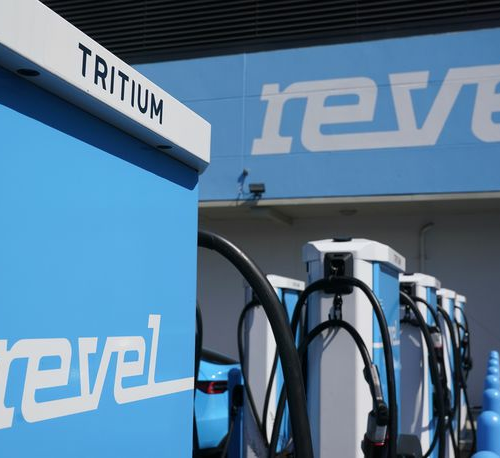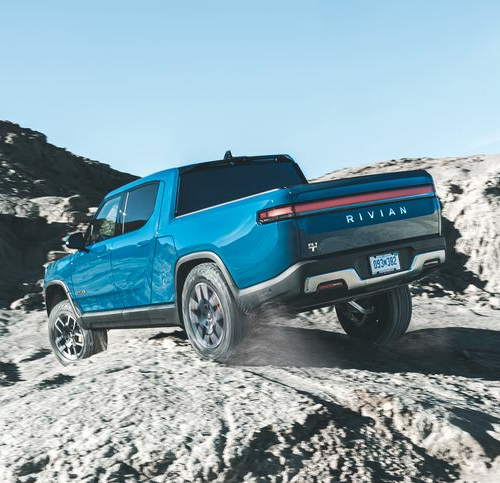BY JENS MEINERS | CarAndDriver.Com
Troy Warren for CNT #Cars
Kia’s new EV carves out an identity separate from its Hyundai Ioniq 5 sibling.
We liked the Kia Imagine concept, which debuted at the 2019 Geneva auto show. It was well proportioned, with taillights evoking the Kia Stinger and an oversized variation of the brand’s “tiger nose” grille. But it seemed to fall somewhat short of the almost limitless potential afforded by the Hyundai Group’s flexible E-GMP electric platform. When Kia decided to fast-forward it into production, design chief Luc Donckerwolke ordered a comprehensive redesign. He placed a group of designers in a remote location in Bavaria and left them with a model of the Lancia Stratos for inspiration.
Seems his approach worked: With its slim and low front end, long greenhouse, sculpted fenders, and an ultra-aggressive rear end with surprising light effects, the Kia EV6 looks unlike anything else on the road. And that includes its closest siblings, the retro-futuristic Hyundai Ioniq 5 and the softly styled Genesis GV60. The Kia EV6 does pay homage to the Stratos—not just its tail end, but also the helmet-like greenhouse.

This spring, the Kia EV6 is hitting the U.S. market in three trim levels: The EX RWD comes with a 58.0-kWh battery and 167 horsepower from a rear motor; the EX+ RWD and GT-Line RWD are fitted with a 77.4-kWh battery and get 225 horsepower from the same motor; and the EX+ AWD and GT-Line AWD keep the 77.4-kWh battery and add a front motor for a total of 320 horsepower. (A 576-hp GT is set to arrive later.) The 320-hp GT-Line AWD is the model we just drove in Europe, and we’re told it will be virtually identical to the U.S.-market version.

As you approach the EV6, the door handles extend automatically. You enter it like a low-riding car; Kia calls the EV6 a crossover, but it’s less convincing than those from Audi, Ford, and Volkswagen. Although the wheelbase has been shortened by four inches compared to the Hyundai Ioniq 5, it’s still long compared to its overall length. And that means generous interior space both up front and in the rear. There’s a frunk as well, but underhood you find a medium-sized plastic box instead of a fully clad luggage space.

We like the comfortable seats, which are covered in grippy black microfiber with light gray accent stripes. There is a clever USB port on the seatbacks for the rear passengers, who enjoy plenty of room themselves. The floating center console houses the start/stop button, a round gear selector, and a wireless phone charger. Two screens, the center one touch sensitive, stretch in front of the driver. The steering wheel is a futuristic two-spoke design. This interior does not try to emulate conventional cars, instead underscoring that the EV6 is something different.
It’s worth taking the time to toggle through the different styles for the digital instrumentation, to adjust the space-age artificial sound or turn it off, and to familiarize yourself with the driving modes and recuperation settings. The Meridian audio system sounds great. However, we were not impressed by the look and performance of the navigation system nor with the menu structure of the infotainment system.

Like every electric, the Kia EV6 is plagued by considerable heft; stated curb weight for the all-wheel-drive version is around 4500 pounds. But with 320 horsepower and an instant 446 pound-feet of torque on tap, that’s not much of a problem. The sprint to 60 mph should take roughly 4.5 seconds, and we can attest to a governed top speed of an indicated 115 mph, which is reached remarkably quickly. Typical of electrics, there is immediate response to pedal input, and in this EV6, there’s also enough oomph to keep the power rush going. The brake recuperation can be adjusted through the steering-wheel paddles.

The EV6 AWD is EPA rated at 274 miles of range, which we found ambitious, at least the way we were driving. At speeds around 80 mph, you’re lucky to squeeze 200 miles out of it. That range is good for an EV but doesn’t change the game.

At least the 800-volt architecture and 350-kW DC fast-charging capability should allow for speedy recharging; Kia promises “nearly 70 miles added in less than five minutes” and the ability to charge from 10 to 80 percent in under 18 minutes. Our real-world experience from Europe, though, suggests that the advertised charging performance can only be achieved in mild temperatures, not in the cold of winter.
The Kia EV6 has a strut front- and multilink rear-suspension setup, and we were impressed with the execution and tuning. The steering is precise, understeer is kept under tight control, and roadholding is great not least thanks to the Michelin Pilot Sport 4 tires on 20-inch wheels. The brakes are capable and easy to modulate, and unlike the Ioniq 5, the EV6 doesn’t tend to bob and bounce when driven aggressively on bumpy surfaces. There is surprisingly little body roll, and this car feels a lot lighter than its actual weight.

Of course, the Kia EV6 comes with a suite of assistance systems, which work well enough to provide helpful feedback but don’t mislead you into a false sense of security. Long trips are a pleasure thanks to the quiet cabin, and we noticed zero squeaks and rattles.
Even with more and more EVs on the market, the Kia EV6 is a very attractive proposition. It combines mass-market build quality with the sporty appeal of a Tesla Model 3, and it is a lot more attractive than the VW ID.4 and Audi Q4 e-tron. Pricing has not been announced yet, but we expect it to begin in the mid-$40K range, while the GT-Line AWD could approach $60K.


































